- Joined
- Sep 22, 2008
- Messages
- 86,368
- Points
- 113
Hong Kong / Politics
Hong Kong protests: how Cathay Pacific’s wings were clipped amid Beijing’s wrath over civil unrest

Danny Lee
Published: 9:30am, 13 Jun, 2020
Why you can trust SCMP
445

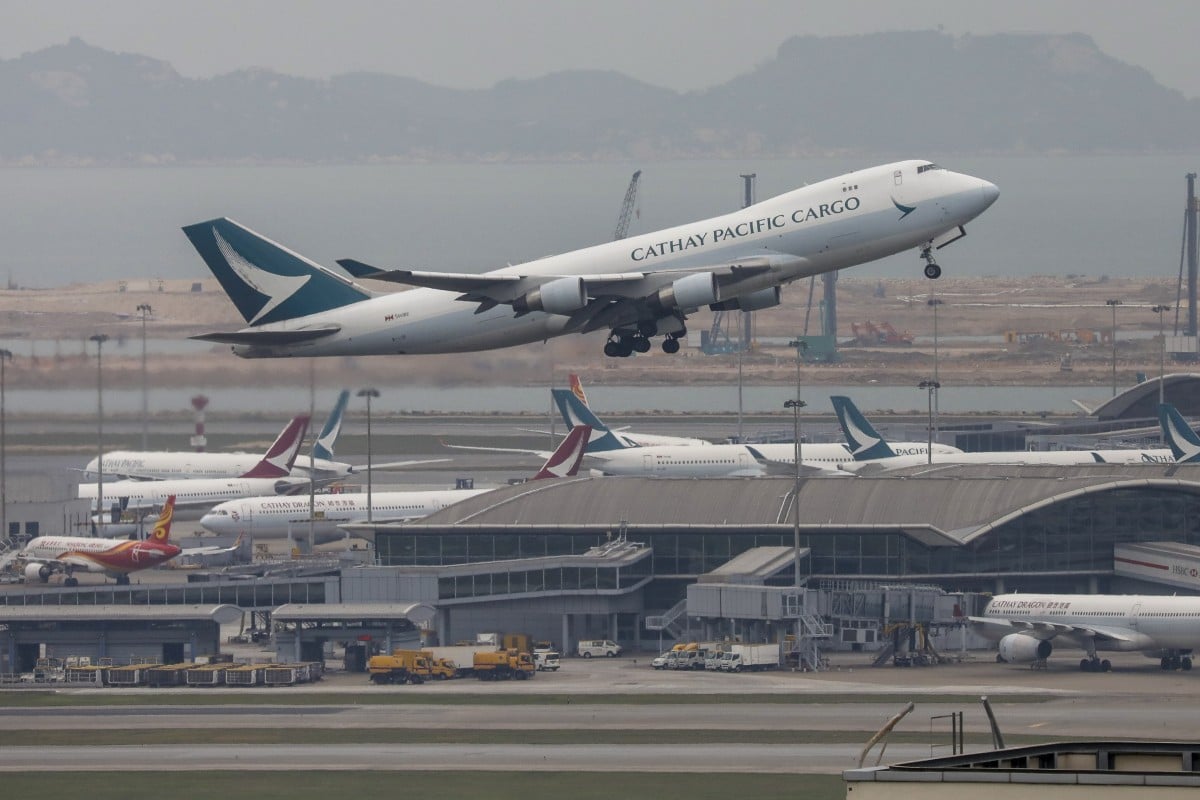
A Cathay Pacific aircraft taking off at the Hong Kong International Airport in Chek Lap Kok. Photo: SCMP/Winson Wong
Rebel City: Hong Kong’s Year of Water and Fire is a new book of essays by the South China Morning Post chronicling the political crisis triggered by the now-withdrawn extradition bill which has just marked its first anniversary this week. Edited by the Post’s Zuraidah Ibrahim and Jeffie Lam, it draws on the work from our newsrooms in Hong Kong, Beijing, Washington and Singapore. This weekend, we will run excerpts from the 512-page book now available online and at bookstores
It is something soccer fans have known for years: that, when a troubled team manager announces he has the “full backing” of the board, his head is about to roll and those of others will follow shortly. While it is hard to know how many soccer fans there were among the 32,000 staff the Cathay Pacific Group employed in August 2019, it was a safe bet that many of them would have had a similar sense of foreboding when the airline’s chairman, John Slosar, told them this line.
Hong Kong airport bosses prepared to ground flights ahead of planned protest
31 Aug 2019

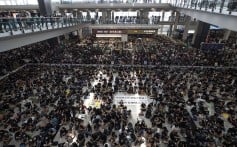
Hong Kong’s flagship carrier had landed itself in the middle of the anti-government protests rocking the city, its staff having drawn attention for all the wrong reasons. Not only was the airline’s home, Hong Kong International Airport, a focal point for protesters whose repeated occupations were making headlines across the world, but a trade union representing Cathay’s flight attendants was backing them.

Cathay Pacific chairman John Slosar’s early reassurances was swiftly followed by the rolling ofheads. Photo: Reuters
Even worse, an off-duty pilot was accused of rioting, another of passing company information to protesters, and two airport ground staff were alleged to have leaked the travel plans of “dirty cops” online.
Still, Slosar seemed reassuring. At a twice-yearly press conference to discuss the company’s financial performance, a journalist asked him whether Cathay would rein in staff who expressed political views. “We certainly wouldn’t dream of telling them what to think about something,” Slosar replied. “They’re all adults, they’re all service professionals. We respect them greatly.”
Advertisement
The exchange lasted little more than 60 seconds, but was significant. Within 72 hours the heads began to roll.


01:29
Hong Kong government to bail out Cathay Pacific with HK$30 billion in loans and direct stake
Hong Kong government to bail out Cathay Pacific with HK$30 billion in loans and direct stake
‘Don’t mess with Beijing’
In the days and weeks that followed Slosar’s comments, an estimated three dozen Cathay staff either lost their jobs or resigned, from cabin crew to pilots to the CEO and finally Slosar himself. The problem for Cathay was that Beijing decided to make it into an example for any other big company that failed to toe its line. And with the airline reliant on business from flights to mainland China, it swiftly found itself unable to withstand the pressure.
CORONAVIRUS UPDATE
Get updates direct to your inbox
SUBSCRIBE
By registering, you agree to our T&C and Privacy Policy
Within minutes of Slosar’s press conference the influential Chinese tabloid Global Times – known for its nationalist tone – began to weigh in. The state-run paper said the airline would “pay a painful price” for the actions of its employees, leading the rest of the mainland media in a chorus of disgust against the company.
More worrying for Cathay was the intervention two days later of the mainland’s aviation regulator, the Civil Aviation Administration of China (CAAC). Without giving the airline prior notice, the CAAC announced publicly that it had issued a major safety warning against the carrier and demanded sweeping changes that included barring its staff from taking part in the protests.
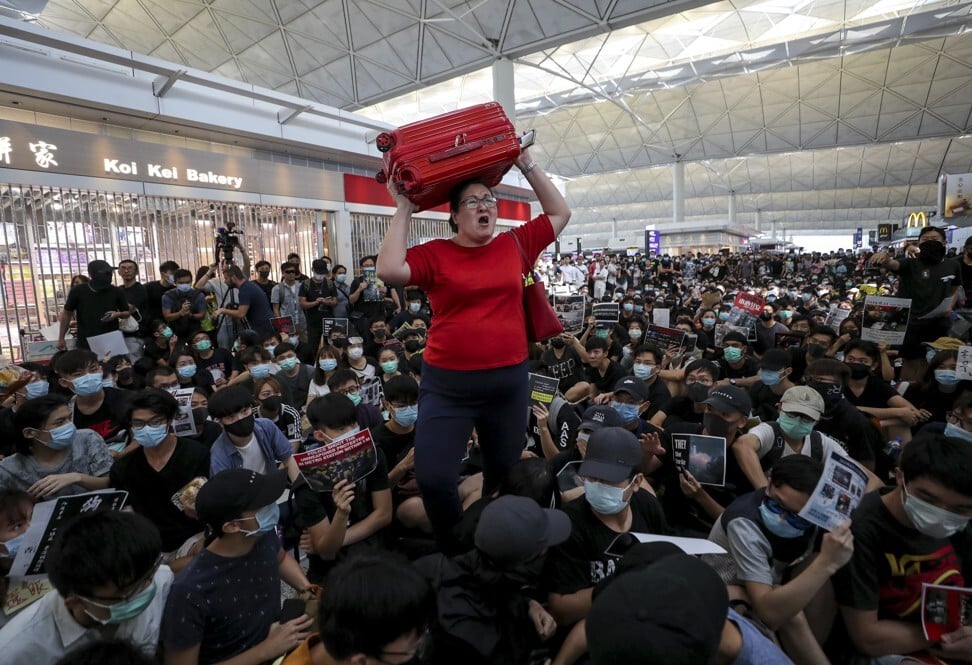
Travellers walk through the anti-government protesters who fill the arrive hall at the Hong Kong International Airport in August last year. Photo: Sam Tsang
It said staff involved in the “unlawful” actions would be banned from flying to mainland China and even from working on planes that entered its airspace. It also said the airline would have to supply lists identifying all crew members working in mainland Chinese airspace for approval, and that planes without prior permission would be denied entry.
Read more
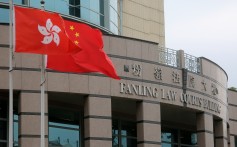
Hong Kong teacher found guilty of assaulting officer during November ‘strike’
Read more

Demosisto trio fined for Legco protest against Hong Kong national anthem law
The announcement was explosive. Not only would being shut out of mainland airspace have put an end to a fifth of the carrier’s daily flights, it would also have meant diverting long-haul flights to Europe and the US.
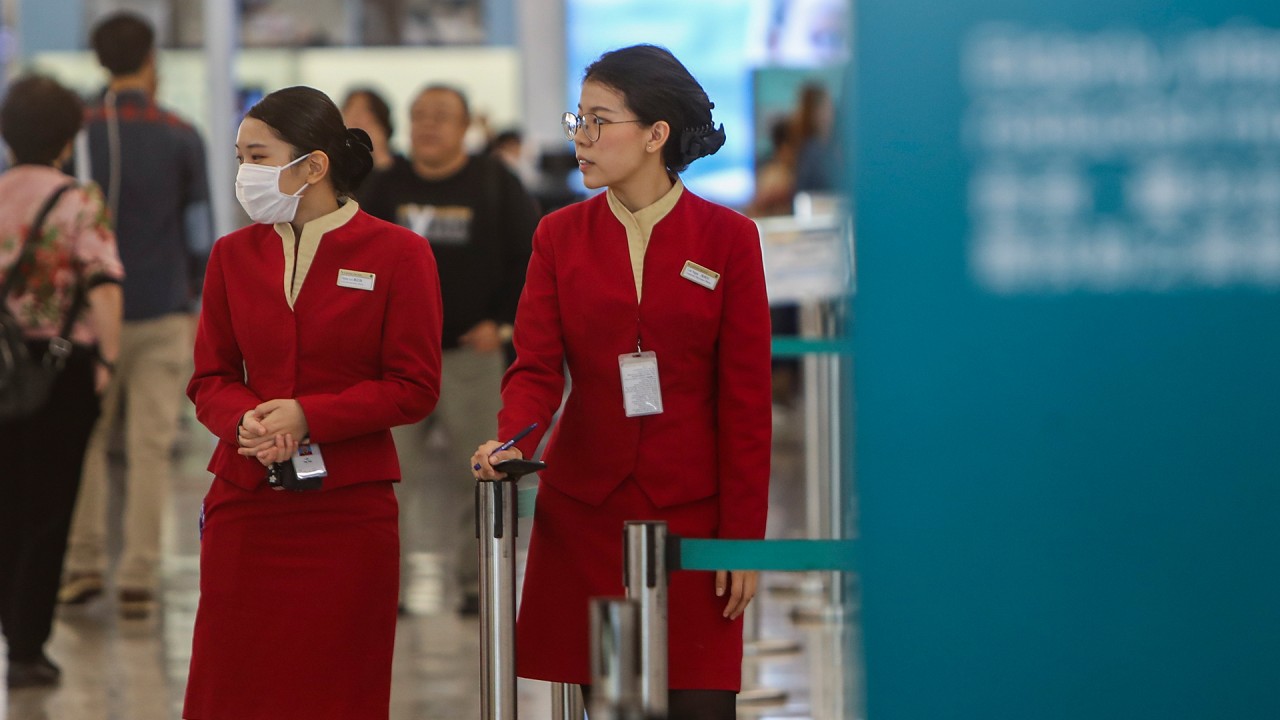

02:05
Cathay Pacific shifts policy allowing staff to wear masks as deadly Wuhan coronavirus spreads
Cathay Pacific shifts policy allowing staff to wear masks as deadly Wuhan coronavirus spreads
Within hours, Cathay confirmed that it had received the directive from Beijing and was “studying it very carefully.” It was dumbfounded at first, though as the shock settled it released statements stressing that the safety of passengers was its “top priority” and vowing “zero tolerance toward any inappropriate and unprofessional behavior that might affect aviation safety.”

An aircraft takes off at Hong Kong International Airport above anti-government protesters last September. Photo: Sam Tsang
Albert Lam Kwong-yu, Hong Kong’s director of civil aviation from 1998 to 2004, said the message was clear: “Don’t mess with Beijing.”
Advertisement
He said the escalation of the protests had touched a nerve with the central government. It was in no mood to pull its punches. “The Hong Kong government had a very lukewarm attitude [to Cathay’s position] but there was an opportunity for China to clamp down on, not exactly Cathay, but to do something to demonstrate the Chinese government was in control,” Lam said. “Cathay presented itself on the table as a lovely dish.”


02:12
Cathay Pacific's highs and lows
Cathay Pacific's highs and lows
Turning the screw
The hours and days following Slosar’s press conference made it clear that Beijing would be appeased by nothing short of regime change. On August 10, just 24 hours after the intervention by the CAAC, Cathay announced it was firing the two members of airport ground staff and removing from flying duties the pilot who had attended the protests.
2 Cathay ground staff fired over leak and pilot removed from flying duties
10 Aug 2019

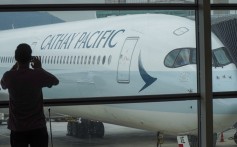
But Beijing was not satisfied. On August 11, Global Times weighed in once more, insisting the airline “draw a clear line” with radical employees. It quoted experts warning of “further risks if the company fails to root out its management problems.” The following day, Cathay’s CEO Rupert Hogg warned that staff could lose their jobs if they were found “supporting or participating” in illegal protests.
Cathay Pacific ‘could sack staff’ after Beijing draws line on protests
12 Aug 2019


But Beijing still was not satisfied.
On August 13 both Cathay and its controlling shareholder Swire Pacific announced in separate but identical press releases that they “strongly supported” the Hong Kong government and called “for the restoration of law and order” in the city. The announcement was overshadowed by another demonstration at the airport, with protesters for the first time physically clashing with travellers.
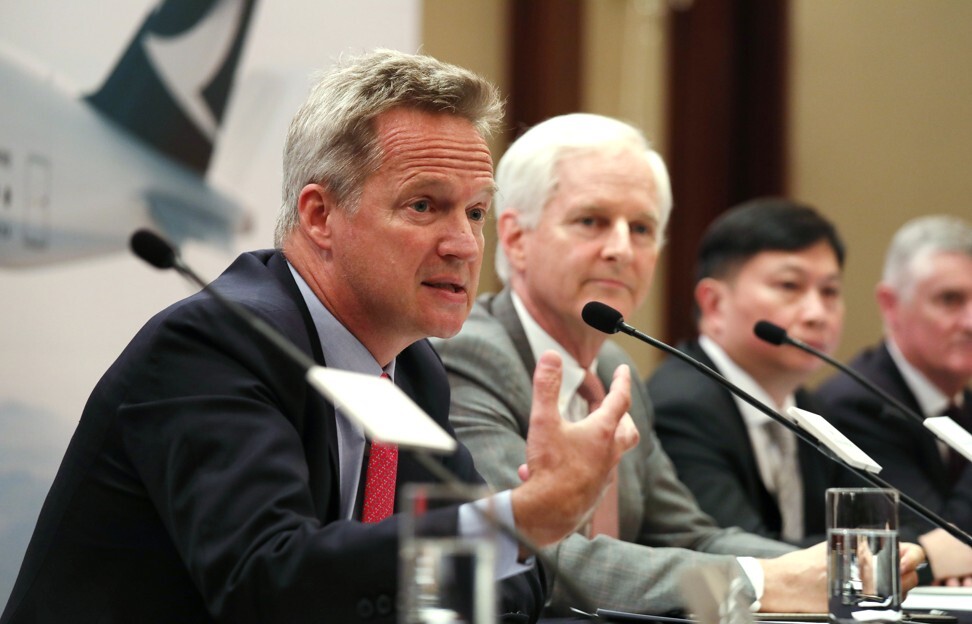
The resignation of Cathay Pacific CEO Rupert Hogg drew gasps, tears and bewilderment. Photo: Xiaomei Chen
And that was when the dominoes began to fall. On August 15, the two pilots were dismissed and the following day, exactly one week after the CAAC’s intervention, Hogg resigned, along with his deputy Paul Loo Kar-pui. The announcement drew gasps, tears and bewilderment as staff mourned two popular leaders who had helped return the airline to profitability in 2018 after two difficult loss-making years.
Cathay Pacific sacks two pilots over protest-related incidents
15 Aug 2019

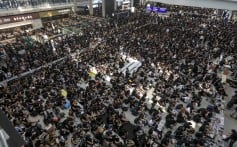
It also raised questions as to who was pulling the strings, not least because China’s state broadcaster China Central Television broke the news of Hogg’s resignation 15 minutes before the official announcement was made to the Hong Kong stock exchange.
Installed in Hogg’s place was Augustus Tang Kin-wing, only the third ethnic Chinese CEO of the airline since its founding in 1946 and a man who had been just weeks away from retirement. Tang was a Swire lifer who would be seen as a steady hand to shareholders.


01:15
Cathay Pacific says it respects staff taking part in protests despite drop in ticket sales
Cathay Pacific says it respects staff taking part in protests despite drop in ticket sales
It later transpired that the shake-up of the airline had been planned for days. At the start of the week, the chairman of Cathay’s parent, Merlin Swire, had been summoned to Beijing to meet the CAAC’s deputy chief Cui Xiaofeng, who told him in unvarnished language that management changes would be needed if it wanted to continue to do business in China.
Achilles’ heel
What the whole sorry saga laid bare was just how much Cathay had come to rely on the mainland Chinese market. In recent decades, the airline’s growth has gone hand in hand with that of China, to the point that today, with almost two dozen destinations and about 400 flights a week to the mainland – far more than its foreign rivals – its access to the country is essential to its business model.
Revenue from Hong Kong and mainland China now account for 50 per cent of the airline’s total.
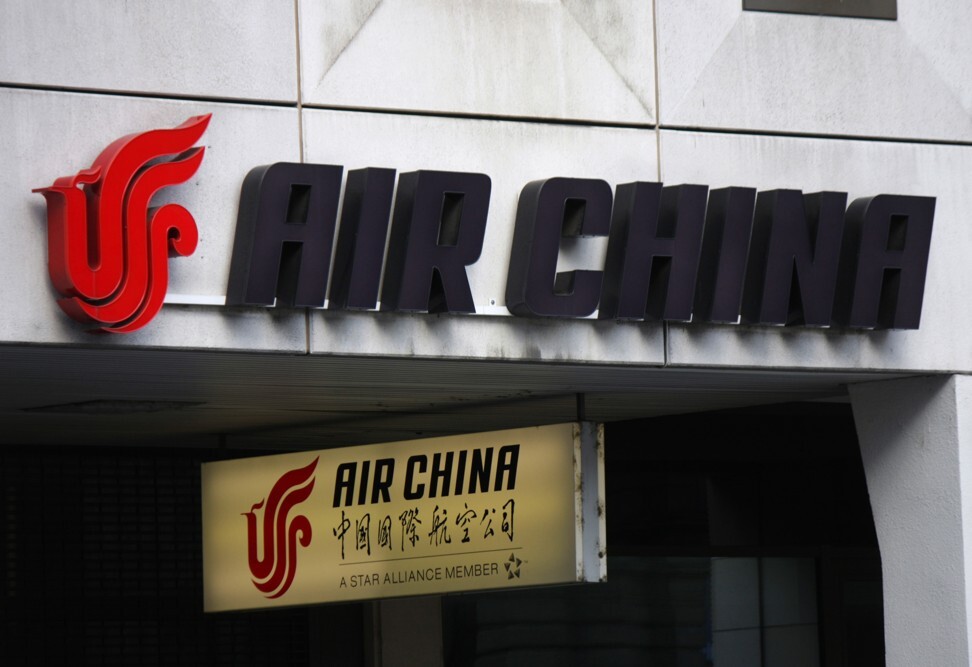
Air China stayed conspicuously silent throughout Cathay Pacific’s ordeal.
In the boardroom, Cathay has two dominant investors. Swire Pacific is the controlling shareholder with a 45 per cent stake, ahead of Air China, the mainland’s national carrier, which has a 29.99 per cent holding.
Air China stayed conspicuously silent throughout Cathay’s ordeal. Swire, like Cathay, has grown increasingly reliant on mainland China. A third of the British-controlled conglomerate’s revenue comes from China and its history is steeped in Hong Kong’s colonial past.
‘White terror’
The job losses did not end with the sackings of Hogg and Loo. One week later, Rebecca Sy On-na, the union leader for flight attendants with the carrier’s sister airline, Cathay Dragon, became the next high-profile casualty. The 40-year-old’s firing proved particularly controversial because of the proliferation of messages of support for the protests she had posted in a personal capacity on her Facebook account.
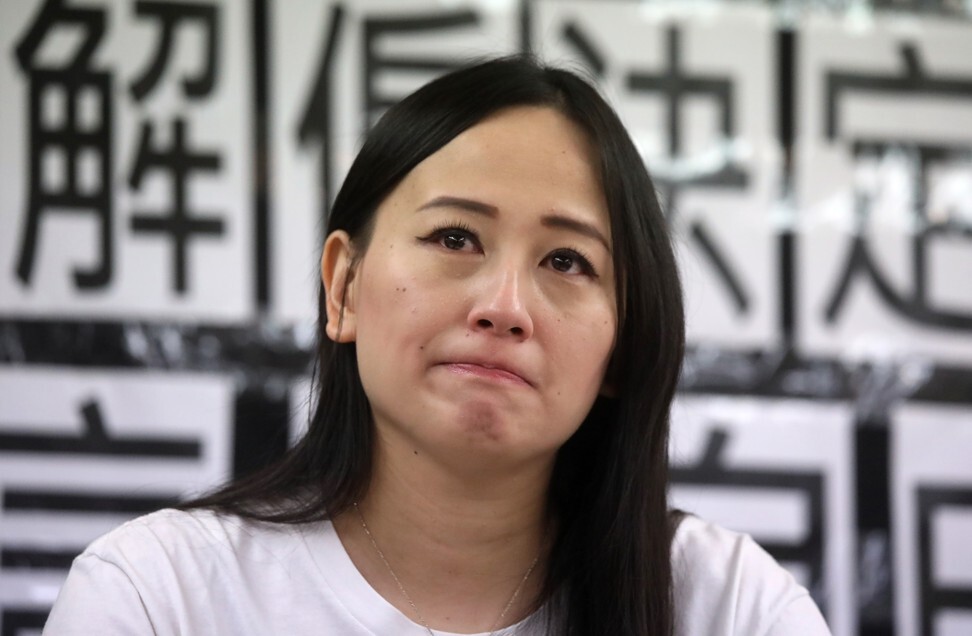
The sacking of Rebecca Sy On-na, the union leader for flight attendants with the carrier’s sister airline, Cathay Dragon, proved particularly controversial. Photo: K.Y. Cheng
Two HR managers showed her screengrabs from her social media account before she was fired. “I didn’t think they would announce my dismissal,” said Sy. “I warned them it would be a big issue and it was.” Her abrupt departure perhaps did more than any other to fuel worries, justified or otherwise, that Beijing was pursuing a strategy of “white terror” to produce a culture of fear within the mainly pro-protester cabin crew community.
Cathay Dragon union leader was ‘asked about Facebook posts’ before her firing
24 Aug 2019

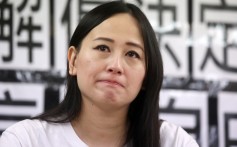
After her sacking, many Cathay employees rethought their presence on social media, using pseudonyms, screening their posts and friends more thoroughly, and even deactivating accounts.
Jeremy Tam Man-ho, a pilot-turned-lawmaker who had spent many months on the front lines of the protests trying to mediate between demonstrators and officers, was another prominent exit from the group.
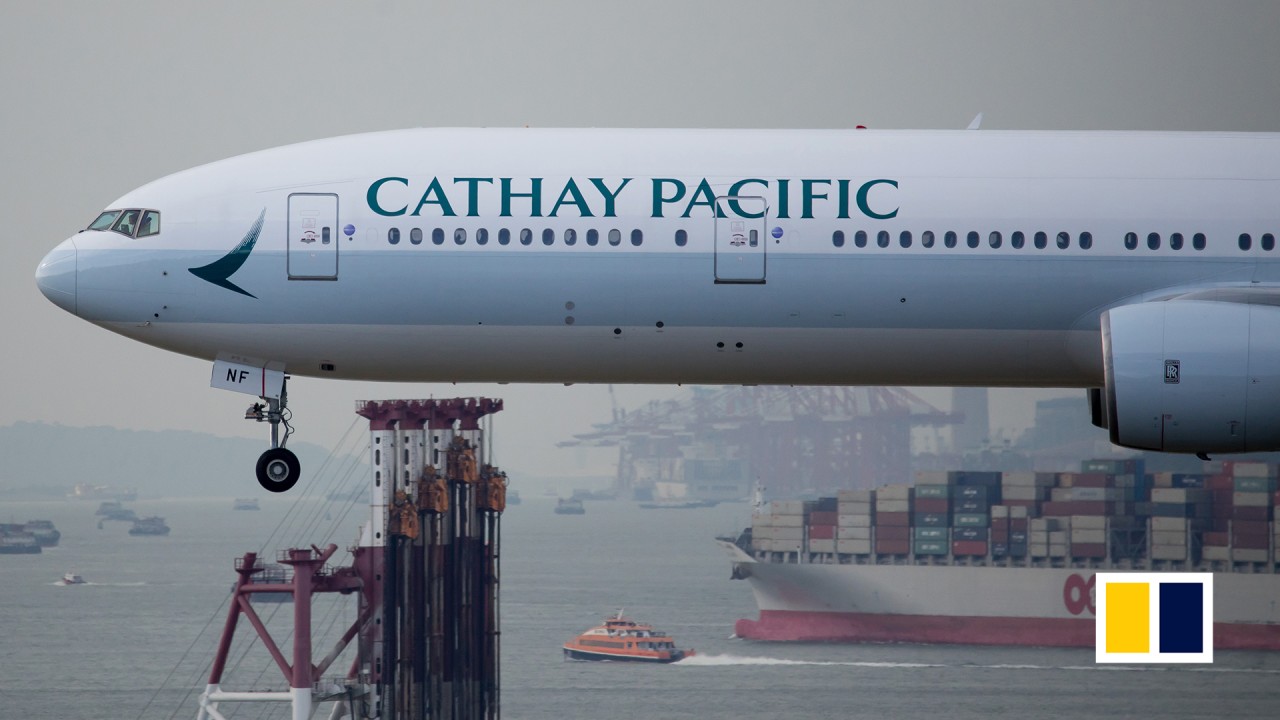

02:30
The declining fortunes of Cathay Pacific
The declining fortunes of Cathay Pacific
Tam felt that the company’s neutral stance had been compromised the moment a young Cathay pilot was arrested at a protest. Soon after, there was an avalanche of “fake news” stories linking the airline to the protests, Tam claimed, saying Cathay’s failure to act sooner in rebutting the claims only fuelled the outrage of netizens on the mainland.
Suddenly, the airline faced a boycott by mainland travellers and state-backed corporations, who ordered staff not to fly with the carrier on the grounds that its agitated cabin crew were a safety risk. Then, “when the CAAC issued its warning to Cathay, everything went completely downhill”, said Tam.

Pilot-turned-lawmaker Jeremy Tam Man-ho gave up his 17-year career to save the company from further attacks. Photo: Sam Tsang
“Cathay had to fire people. They had a gun to their head,” Tam said. The 44-year-old pilot-politician surmised that he too would be in the line of fire and gave up his 17-year career to save the company from further attacks. “When Hogg and Loo resigned, I realised it was time for me to go. If the major reason was they needed to take the heat, the China government would think, ‘What about this Jeremy Tam?’”
Tam was not the last to go. That distinction fell to Slosar, whose ominous backing of staff did not save them but was the start of the chain reaction. Slosar finally announced his departure on September 4, but, as with Hogg, the mainland media had already beaten him to the punch, this time by 24 hours. It later emerged that he had offered to resign much earlier, but his scalp had not been seen as significant enough and the offer had been rejected. In the end, he opted to “retire” instead. With Slosar dispatched, the exercise in regime change was complete, but it was not entirely the end of the matter.
John Slosar resigns as chairman of Cathay Pacific Airways
4 Sep 2019

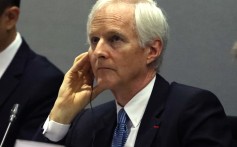
Sunny skies ahead?
While the immediate turbulence appeared to have passed for Cathay and its majority stakeholder, politics continued to rear its head. In November, Swire appointed Shirley Lin, a leading academic on Taipei-Beijing relations and a noted critic of the Hong Kong government’s handling of the civil unrest, as an independent director starting January 1, 2020.
But within a month, Lin’s daughter, the playwright Stefani Kuo, was in the headlines for expressing her heartfelt support for the protesters in a viral video. Given the sensitivities over both Taiwan and the protests, the appointment had crossed the very lines that Beijing was most sensitive to. By February, Lin had agreed to resign. Swire’s subsequent explanation suggested it was, finally, on message.
“Over the course of [Lin’s] appointment, it has emerged that her roles as an independent commentator and scholar could potentially be at odds with the operational realities of Swire Pacific’s businesses,” it said.
Other appointments, too, suggested a shift in mindset. In November, Patrick Healy was announced as Slosar’s replacement.
Another Swire lifer, Healy, 53, had spent most of his career working in mainland China. Unlike Slosar or Hogg, he was fluent in Mandarin.
Another addition to the Swire board, announced in January, was Zhang Zhuoping, 48, who returned to the company after leaving to start his own business. Part of Zhang’s appeal, insiders said, was his effortless understanding of both Western and Chinese cultures. Both men will have a lot on their plates in 2020, from picking up the pieces after the devastating impact of the coronavirus pandemic to, when the situation eases, honing their ability to navigate Hong Kong’s politics while paying heed to business imperatives on the mainland.
For Cathay, the city’s “one country, two systems” governing principle may bring lush rewards, but it also comes laden with risks. For now, the duo have the full backing of the board.
Hong Kong protests: how Cathay Pacific’s wings were clipped amid Beijing’s wrath over civil unrest
- Staff’s involvement in anti-government protests saw the airline paying ‘a painful price’, with dozens of employees losing jobs or resigning
- But that was not the end of the matter, and the whole saga laid bare just how much Cathay had come to rely on the mainland market

Danny Lee
Published: 9:30am, 13 Jun, 2020
Why you can trust SCMP
445


A Cathay Pacific aircraft taking off at the Hong Kong International Airport in Chek Lap Kok. Photo: SCMP/Winson Wong
Rebel City: Hong Kong’s Year of Water and Fire is a new book of essays by the South China Morning Post chronicling the political crisis triggered by the now-withdrawn extradition bill which has just marked its first anniversary this week. Edited by the Post’s Zuraidah Ibrahim and Jeffie Lam, it draws on the work from our newsrooms in Hong Kong, Beijing, Washington and Singapore. This weekend, we will run excerpts from the 512-page book now available online and at bookstores
It is something soccer fans have known for years: that, when a troubled team manager announces he has the “full backing” of the board, his head is about to roll and those of others will follow shortly. While it is hard to know how many soccer fans there were among the 32,000 staff the Cathay Pacific Group employed in August 2019, it was a safe bet that many of them would have had a similar sense of foreboding when the airline’s chairman, John Slosar, told them this line.
Hong Kong airport bosses prepared to ground flights ahead of planned protest
31 Aug 2019

Hong Kong’s flagship carrier had landed itself in the middle of the anti-government protests rocking the city, its staff having drawn attention for all the wrong reasons. Not only was the airline’s home, Hong Kong International Airport, a focal point for protesters whose repeated occupations were making headlines across the world, but a trade union representing Cathay’s flight attendants was backing them.

Cathay Pacific chairman John Slosar’s early reassurances was swiftly followed by the rolling ofheads. Photo: Reuters
Even worse, an off-duty pilot was accused of rioting, another of passing company information to protesters, and two airport ground staff were alleged to have leaked the travel plans of “dirty cops” online.
Still, Slosar seemed reassuring. At a twice-yearly press conference to discuss the company’s financial performance, a journalist asked him whether Cathay would rein in staff who expressed political views. “We certainly wouldn’t dream of telling them what to think about something,” Slosar replied. “They’re all adults, they’re all service professionals. We respect them greatly.”
Advertisement
The exchange lasted little more than 60 seconds, but was significant. Within 72 hours the heads began to roll.


01:29
Hong Kong government to bail out Cathay Pacific with HK$30 billion in loans and direct stake
Hong Kong government to bail out Cathay Pacific with HK$30 billion in loans and direct stake
‘Don’t mess with Beijing’
In the days and weeks that followed Slosar’s comments, an estimated three dozen Cathay staff either lost their jobs or resigned, from cabin crew to pilots to the CEO and finally Slosar himself. The problem for Cathay was that Beijing decided to make it into an example for any other big company that failed to toe its line. And with the airline reliant on business from flights to mainland China, it swiftly found itself unable to withstand the pressure.
CORONAVIRUS UPDATE
Get updates direct to your inbox
SUBSCRIBE
By registering, you agree to our T&C and Privacy Policy
Within minutes of Slosar’s press conference the influential Chinese tabloid Global Times – known for its nationalist tone – began to weigh in. The state-run paper said the airline would “pay a painful price” for the actions of its employees, leading the rest of the mainland media in a chorus of disgust against the company.
More worrying for Cathay was the intervention two days later of the mainland’s aviation regulator, the Civil Aviation Administration of China (CAAC). Without giving the airline prior notice, the CAAC announced publicly that it had issued a major safety warning against the carrier and demanded sweeping changes that included barring its staff from taking part in the protests.

Travellers walk through the anti-government protesters who fill the arrive hall at the Hong Kong International Airport in August last year. Photo: Sam Tsang
It said staff involved in the “unlawful” actions would be banned from flying to mainland China and even from working on planes that entered its airspace. It also said the airline would have to supply lists identifying all crew members working in mainland Chinese airspace for approval, and that planes without prior permission would be denied entry.
Read more

Hong Kong teacher found guilty of assaulting officer during November ‘strike’
Read more

Demosisto trio fined for Legco protest against Hong Kong national anthem law
The announcement was explosive. Not only would being shut out of mainland airspace have put an end to a fifth of the carrier’s daily flights, it would also have meant diverting long-haul flights to Europe and the US.


02:05
Cathay Pacific shifts policy allowing staff to wear masks as deadly Wuhan coronavirus spreads
Cathay Pacific shifts policy allowing staff to wear masks as deadly Wuhan coronavirus spreads
Within hours, Cathay confirmed that it had received the directive from Beijing and was “studying it very carefully.” It was dumbfounded at first, though as the shock settled it released statements stressing that the safety of passengers was its “top priority” and vowing “zero tolerance toward any inappropriate and unprofessional behavior that might affect aviation safety.”

An aircraft takes off at Hong Kong International Airport above anti-government protesters last September. Photo: Sam Tsang
Albert Lam Kwong-yu, Hong Kong’s director of civil aviation from 1998 to 2004, said the message was clear: “Don’t mess with Beijing.”
Advertisement
He said the escalation of the protests had touched a nerve with the central government. It was in no mood to pull its punches. “The Hong Kong government had a very lukewarm attitude [to Cathay’s position] but there was an opportunity for China to clamp down on, not exactly Cathay, but to do something to demonstrate the Chinese government was in control,” Lam said. “Cathay presented itself on the table as a lovely dish.”


02:12
Cathay Pacific's highs and lows
Cathay Pacific's highs and lows
Turning the screw
The hours and days following Slosar’s press conference made it clear that Beijing would be appeased by nothing short of regime change. On August 10, just 24 hours after the intervention by the CAAC, Cathay announced it was firing the two members of airport ground staff and removing from flying duties the pilot who had attended the protests.
2 Cathay ground staff fired over leak and pilot removed from flying duties
10 Aug 2019

But Beijing was not satisfied. On August 11, Global Times weighed in once more, insisting the airline “draw a clear line” with radical employees. It quoted experts warning of “further risks if the company fails to root out its management problems.” The following day, Cathay’s CEO Rupert Hogg warned that staff could lose their jobs if they were found “supporting or participating” in illegal protests.
Cathay Pacific ‘could sack staff’ after Beijing draws line on protests
12 Aug 2019

But Beijing still was not satisfied.
On August 13 both Cathay and its controlling shareholder Swire Pacific announced in separate but identical press releases that they “strongly supported” the Hong Kong government and called “for the restoration of law and order” in the city. The announcement was overshadowed by another demonstration at the airport, with protesters for the first time physically clashing with travellers.

The resignation of Cathay Pacific CEO Rupert Hogg drew gasps, tears and bewilderment. Photo: Xiaomei Chen
And that was when the dominoes began to fall. On August 15, the two pilots were dismissed and the following day, exactly one week after the CAAC’s intervention, Hogg resigned, along with his deputy Paul Loo Kar-pui. The announcement drew gasps, tears and bewilderment as staff mourned two popular leaders who had helped return the airline to profitability in 2018 after two difficult loss-making years.
Cathay Pacific sacks two pilots over protest-related incidents
15 Aug 2019

It also raised questions as to who was pulling the strings, not least because China’s state broadcaster China Central Television broke the news of Hogg’s resignation 15 minutes before the official announcement was made to the Hong Kong stock exchange.
Installed in Hogg’s place was Augustus Tang Kin-wing, only the third ethnic Chinese CEO of the airline since its founding in 1946 and a man who had been just weeks away from retirement. Tang was a Swire lifer who would be seen as a steady hand to shareholders.


01:15
Cathay Pacific says it respects staff taking part in protests despite drop in ticket sales
Cathay Pacific says it respects staff taking part in protests despite drop in ticket sales
It later transpired that the shake-up of the airline had been planned for days. At the start of the week, the chairman of Cathay’s parent, Merlin Swire, had been summoned to Beijing to meet the CAAC’s deputy chief Cui Xiaofeng, who told him in unvarnished language that management changes would be needed if it wanted to continue to do business in China.
Achilles’ heel
What the whole sorry saga laid bare was just how much Cathay had come to rely on the mainland Chinese market. In recent decades, the airline’s growth has gone hand in hand with that of China, to the point that today, with almost two dozen destinations and about 400 flights a week to the mainland – far more than its foreign rivals – its access to the country is essential to its business model.
Revenue from Hong Kong and mainland China now account for 50 per cent of the airline’s total.

Air China stayed conspicuously silent throughout Cathay Pacific’s ordeal.
In the boardroom, Cathay has two dominant investors. Swire Pacific is the controlling shareholder with a 45 per cent stake, ahead of Air China, the mainland’s national carrier, which has a 29.99 per cent holding.
Air China stayed conspicuously silent throughout Cathay’s ordeal. Swire, like Cathay, has grown increasingly reliant on mainland China. A third of the British-controlled conglomerate’s revenue comes from China and its history is steeped in Hong Kong’s colonial past.
‘White terror’
The job losses did not end with the sackings of Hogg and Loo. One week later, Rebecca Sy On-na, the union leader for flight attendants with the carrier’s sister airline, Cathay Dragon, became the next high-profile casualty. The 40-year-old’s firing proved particularly controversial because of the proliferation of messages of support for the protests she had posted in a personal capacity on her Facebook account.

The sacking of Rebecca Sy On-na, the union leader for flight attendants with the carrier’s sister airline, Cathay Dragon, proved particularly controversial. Photo: K.Y. Cheng
Two HR managers showed her screengrabs from her social media account before she was fired. “I didn’t think they would announce my dismissal,” said Sy. “I warned them it would be a big issue and it was.” Her abrupt departure perhaps did more than any other to fuel worries, justified or otherwise, that Beijing was pursuing a strategy of “white terror” to produce a culture of fear within the mainly pro-protester cabin crew community.
Cathay Dragon union leader was ‘asked about Facebook posts’ before her firing
24 Aug 2019

After her sacking, many Cathay employees rethought their presence on social media, using pseudonyms, screening their posts and friends more thoroughly, and even deactivating accounts.
Jeremy Tam Man-ho, a pilot-turned-lawmaker who had spent many months on the front lines of the protests trying to mediate between demonstrators and officers, was another prominent exit from the group.


02:30
The declining fortunes of Cathay Pacific
The declining fortunes of Cathay Pacific
Tam felt that the company’s neutral stance had been compromised the moment a young Cathay pilot was arrested at a protest. Soon after, there was an avalanche of “fake news” stories linking the airline to the protests, Tam claimed, saying Cathay’s failure to act sooner in rebutting the claims only fuelled the outrage of netizens on the mainland.
Suddenly, the airline faced a boycott by mainland travellers and state-backed corporations, who ordered staff not to fly with the carrier on the grounds that its agitated cabin crew were a safety risk. Then, “when the CAAC issued its warning to Cathay, everything went completely downhill”, said Tam.

Pilot-turned-lawmaker Jeremy Tam Man-ho gave up his 17-year career to save the company from further attacks. Photo: Sam Tsang
“Cathay had to fire people. They had a gun to their head,” Tam said. The 44-year-old pilot-politician surmised that he too would be in the line of fire and gave up his 17-year career to save the company from further attacks. “When Hogg and Loo resigned, I realised it was time for me to go. If the major reason was they needed to take the heat, the China government would think, ‘What about this Jeremy Tam?’”
Tam was not the last to go. That distinction fell to Slosar, whose ominous backing of staff did not save them but was the start of the chain reaction. Slosar finally announced his departure on September 4, but, as with Hogg, the mainland media had already beaten him to the punch, this time by 24 hours. It later emerged that he had offered to resign much earlier, but his scalp had not been seen as significant enough and the offer had been rejected. In the end, he opted to “retire” instead. With Slosar dispatched, the exercise in regime change was complete, but it was not entirely the end of the matter.
John Slosar resigns as chairman of Cathay Pacific Airways
4 Sep 2019

Sunny skies ahead?
While the immediate turbulence appeared to have passed for Cathay and its majority stakeholder, politics continued to rear its head. In November, Swire appointed Shirley Lin, a leading academic on Taipei-Beijing relations and a noted critic of the Hong Kong government’s handling of the civil unrest, as an independent director starting January 1, 2020.
But within a month, Lin’s daughter, the playwright Stefani Kuo, was in the headlines for expressing her heartfelt support for the protesters in a viral video. Given the sensitivities over both Taiwan and the protests, the appointment had crossed the very lines that Beijing was most sensitive to. By February, Lin had agreed to resign. Swire’s subsequent explanation suggested it was, finally, on message.
“Over the course of [Lin’s] appointment, it has emerged that her roles as an independent commentator and scholar could potentially be at odds with the operational realities of Swire Pacific’s businesses,” it said.
Other appointments, too, suggested a shift in mindset. In November, Patrick Healy was announced as Slosar’s replacement.
Another Swire lifer, Healy, 53, had spent most of his career working in mainland China. Unlike Slosar or Hogg, he was fluent in Mandarin.
Another addition to the Swire board, announced in January, was Zhang Zhuoping, 48, who returned to the company after leaving to start his own business. Part of Zhang’s appeal, insiders said, was his effortless understanding of both Western and Chinese cultures. Both men will have a lot on their plates in 2020, from picking up the pieces after the devastating impact of the coronavirus pandemic to, when the situation eases, honing their ability to navigate Hong Kong’s politics while paying heed to business imperatives on the mainland.
For Cathay, the city’s “one country, two systems” governing principle may bring lush rewards, but it also comes laden with risks. For now, the duo have the full backing of the board.
